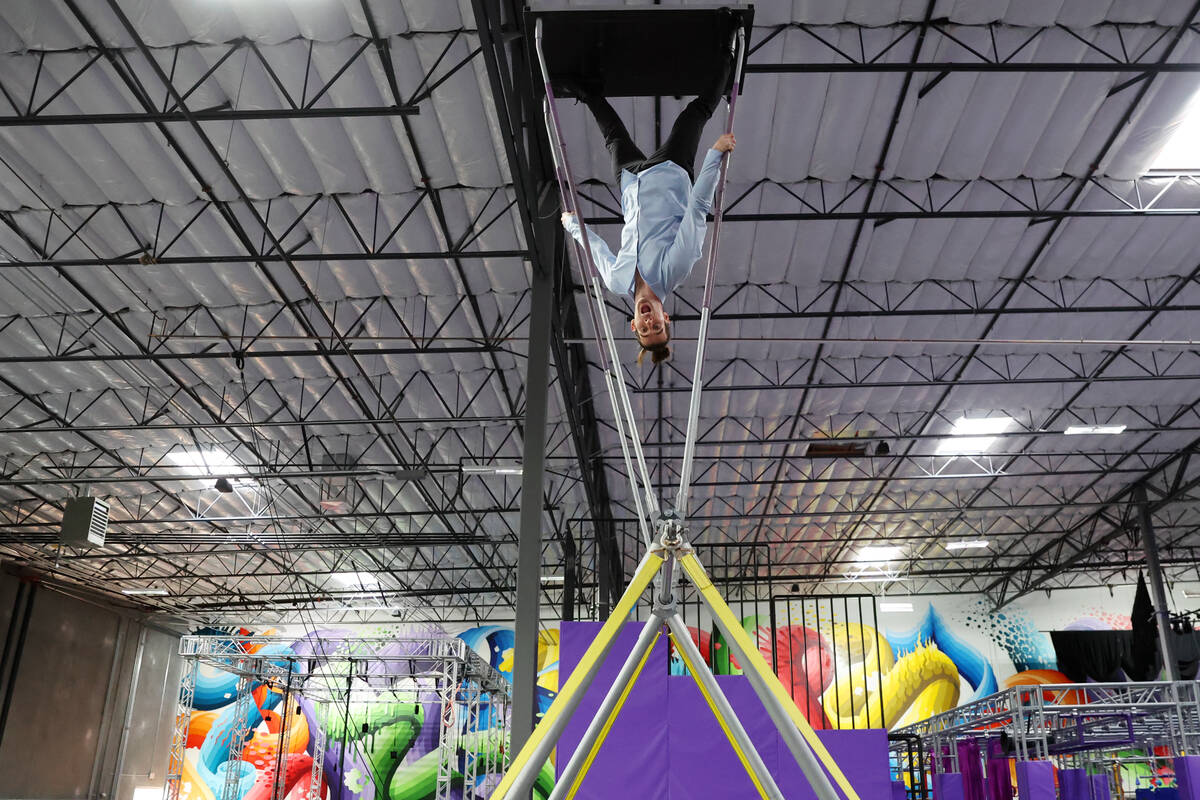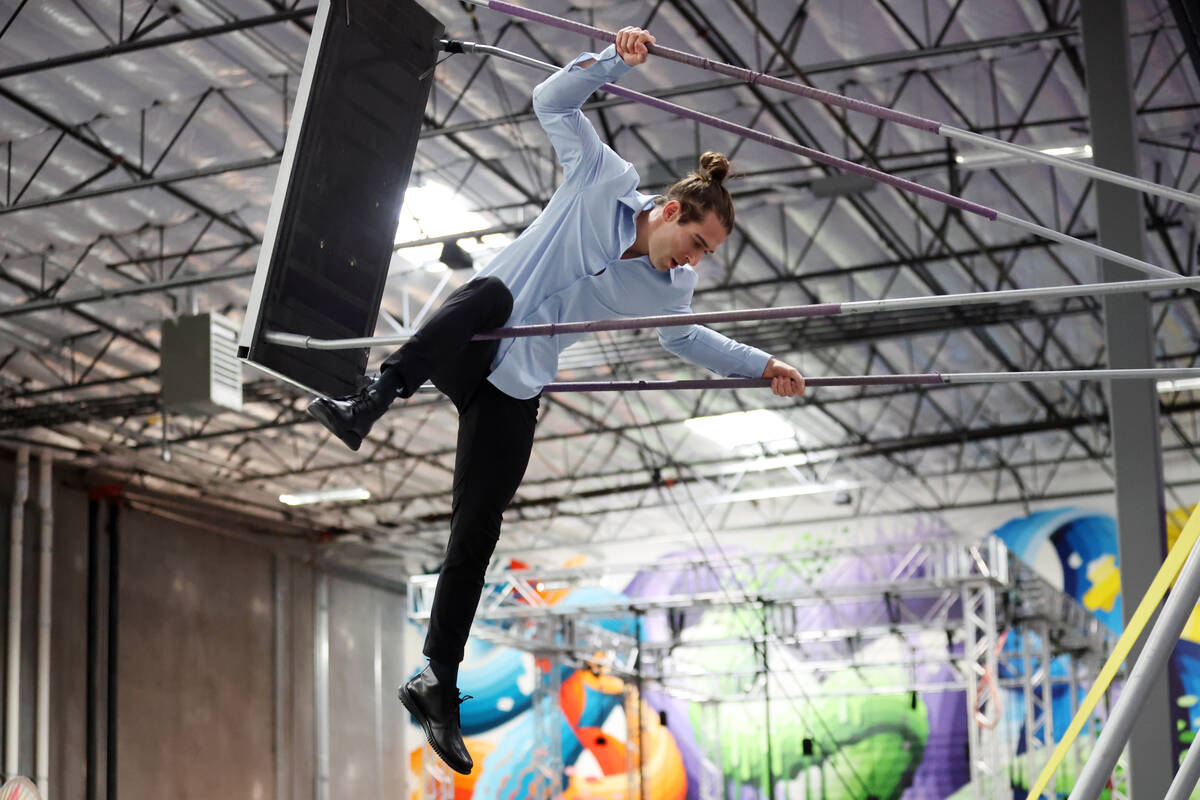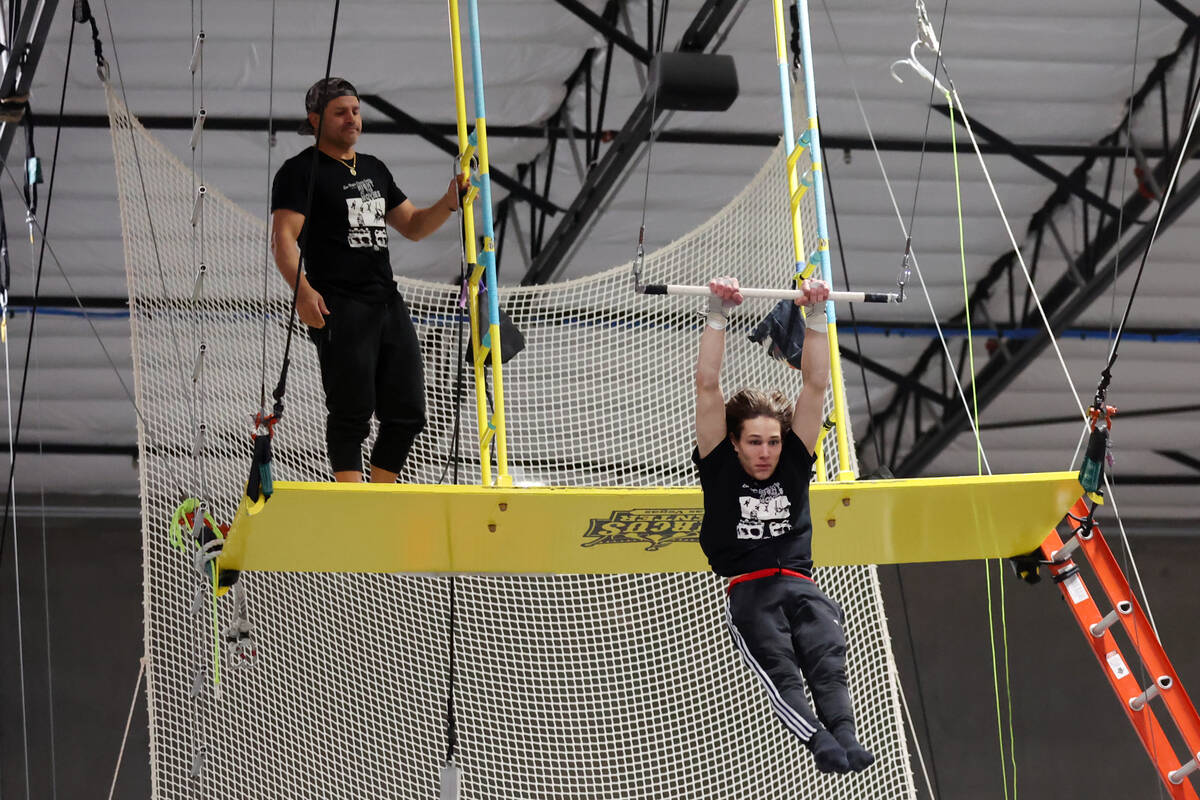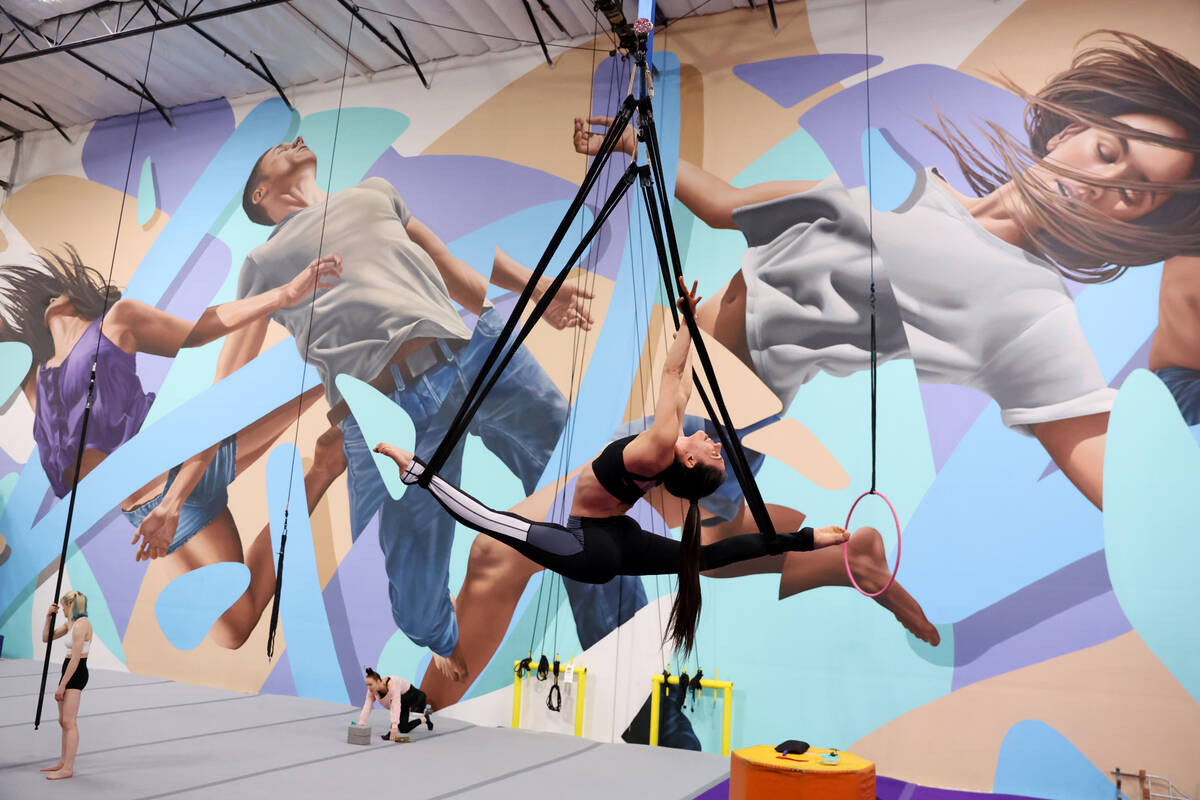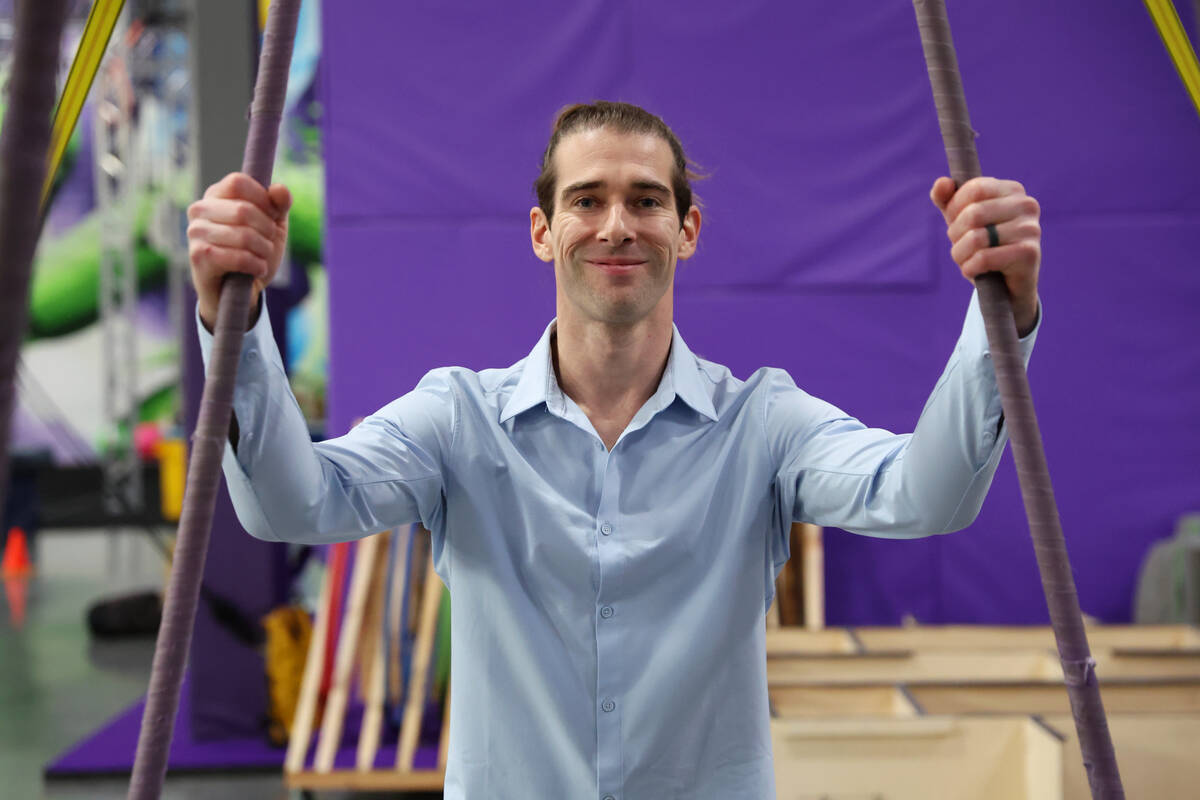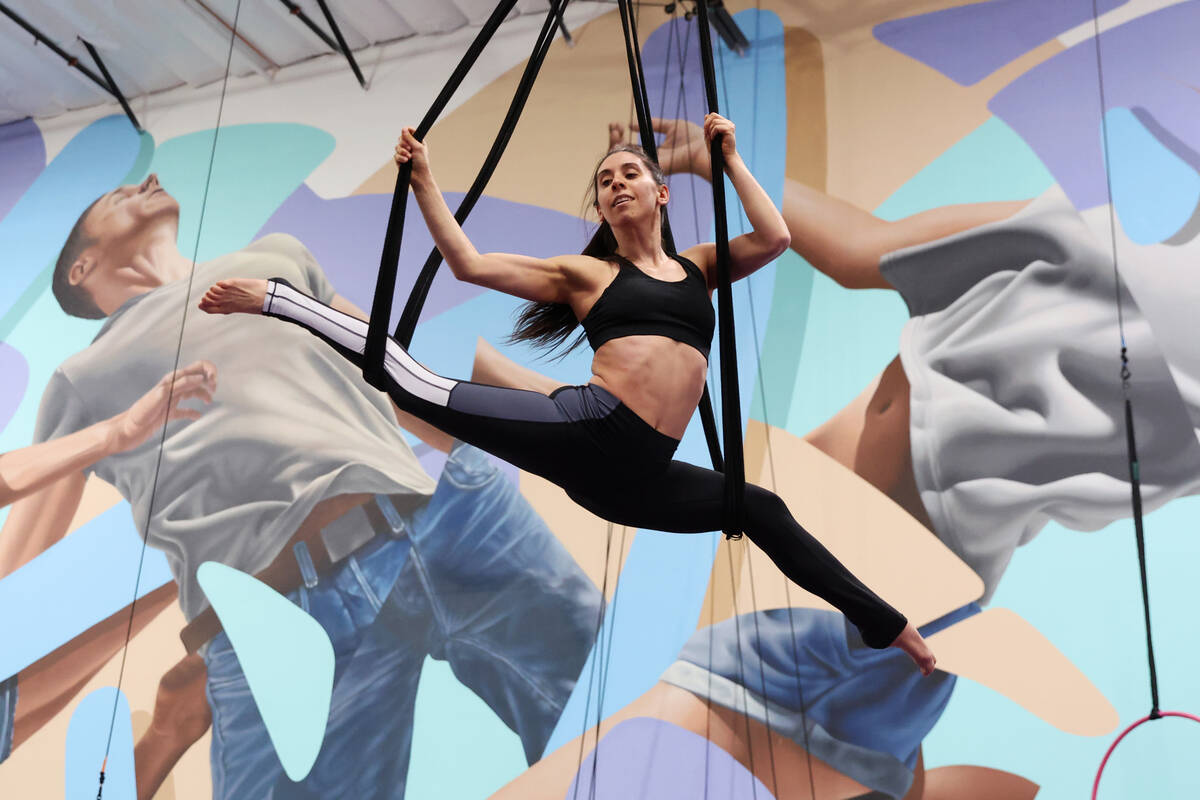‘Circus Meets Medicine’: Treating tumblers, contortionists and hair-hangers
Emergency physician Nathan Hollister noticed that when a UFC fighter came into the ER, or a member of the Las Vegas Raiders or Vegas Golden Knights, there were special protocols for treating their injuries.
Not so when it came to treating circus performers — the tumblers, contortionists and hair-hangers who entertain in Las Vegas shows, said Hollister, a former gymnast who trains on the flying trapeze.
“I actually had a few episodes where we have circus artists come in describing falls from apparatuses they use on a regular basis and that my medical staff … just were completely unfamiliar with,” said Hollister, a second-year emergency medicine resident.
In talking with circus performer Paul Friedman and other friends, they came up with the idea of creating a bridge between the medical and circus communities. That bridge is the “Circus Meets Medicine” medical conference Tuesday at the Las Vegas Circus Center.
The conference aims to educate medical professionals and to spur research in the largely unexplored space where circus meets medicine.
Friedman estimated that there are 400 to 600 circus performers in regular shows in Las Vegas, and many more here for training. Because of their occupation, the performers are at increased risk for acute and chronic injuries, he said.
As elite athletes, they demand more of their bodies and have unique recovery needs. Whereas most people recovering from a shoulder surgery might need to be able to grab an item off a high shelf, a circus performer might be required to hold another human high above them, said Friedman, an acrobat with the Cirque du Soleil show “Mystere.”
“We need our bodies to perform at such a high level on a day-in-day-out basis,” he said.
Performers also may exhibit “strange injuries that have yet to be classified,” Hollister said, or have herniated discs at a young age or mild concussions from their acrobatics.
Medicine’s approach to a sprained ankle or a musculoskeletal injury also could be refined for a circus performer. With many performers paid by the show, “when I’m asking someone to take two weeks off, I’m asking them to forgo two weeks of their paycheck,” Hollister said. Instead, a doctor could consider how the performer might work around the injury.
Las Vegas for many years has had elite circus athletes, though they don’t have as high a profile as newer elite athletes such as Las Vegas Raiders and Vegas Golden Knights players, said John Mercer, a professor of kinesiology and nutrition sciences at UNLV, which is in the midst of an initiative emphasizing sports research and innovation.
“These athletes are doing their shows seven days a week, twice a night, and there’s just not enough research in this space,” Mercer said.
Studying the biomechanics of a circus performer could reduce their risk of injury, Mercer said. By putting sensors on the body, for example, researchers can figure out the electrical activity of muscles, decipher patterns of muscle activity and determine which muscles are being stressed.
The aim is “making the movement, and act, as safe as possible,” he said.
“Circus Meets Medicine” is scheduled from 6 to 10:30 p.m. on Tuesday at the Las Vegas Circus Center, 6425 S. Jones Blvd., No. 102. The conference will include lectures, circus demonstrations, a circus artist Q&A and a panel discussion. General admission is $20 and student admission $15.
Contact Mary Hynes at mhynes@reviewjournal.com or 702-383-0336. Follow @MaryHynes1 on Twitter.



